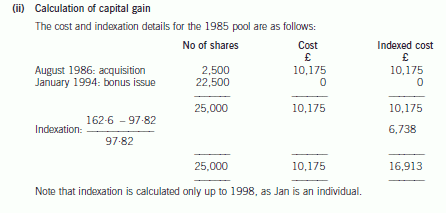ACCA学员、准会员、会员一样吗?
发布时间:2021-03-12
ACCA学员、准会员、会员一样吗?
最佳答案
不一样的
1.ACCA学员:已注册成功,并进行相关科目考试的学员。
2.ACCA准学员:如果学员通过了全部考试,但暂时还不具备3年专业实践经验,或者还没有完成在线职业操守训练课程的学习和测试,则可以先成为准会员。3.ACCA会员:13科全部通过,并且有3年相关工作经验的ACCA.(只有ACCA的正式会员才能被允许使用“ACCA”和“特许公认会计师”的头衔。)
下面小编为大家准备了 ACCA考试 的相关考题,供大家学习参考。
(c) (i) Identify and describe FOUR quality control procedures that are applicable to the individual audit
engagement; and (8 marks)
(c) (i) ISQC 1 Quality Control for Firms That Perform. Audits and Reviews of Historical Financial Information and Other
Assurance and Related Services Engagements provides guidance on the overall quality control systems that should be
implemented by an audit firm. ISA 220 Quality Control for Audits of Historical Financial Information specifies the quality
control procedures that should be applied by the engagement team in individual audit assignments.
Procedures include the following:
Client acceptance procedures
There should be full documentation, and conclusion on, ethical and client acceptance issues in each audit assignment.
The engagement partner should consider whether members of the audit team have complied with ethical requirements,
for example, whether all members of the team are independent of the client. Additionally, the engagement partner should
conclude whether all acceptance procedures have been followed, for example, that the audit firm has considered the
integrity of the principal owners and key management of the client. Other procedures on client acceptance should
include:
– Obtaining professional clearance from previous auditors
– Consideration of any conflict of interest
– Money laundering (client identification) procedures.
Engagement team
Procedures should be followed to ensure that the engagement team collectively has the skills, competence and time to
perform. the audit engagement. The engagement partner should assess that the audit team, for example:
– Has the appropriate level of technical knowledge
– Has experience of audit engagements of a similar nature and complexity
– Has the ability to apply professional judgement
– Understands professional standards, and regulatory and legal requirements.
Direction
The engagement team should be directed by the engagement partner. Procedures such as an engagement planning
meeting should be undertaken to ensure that the team understands:
– Their responsibilities
– The objectives of the work they are to perform
– The nature of the client’s business
– Risk related issues
– How to deal with any problems that may arise; and
– The detailed approach to the performance of the audit.
The planning meeting should be led by the partner and should include all people involved with the audit. There should
be a discussion of the key issues identified at the planning stage.
Supervision
Supervision should be continuous during the engagement. Any problems that arise during the audit should be rectified
as soon as possible. Attention should be focused on ensuring that members of the audit team are carrying out their work
in accordance with the planned approach to the engagement. Significant matters should be brought to the attention of
senior members of the audit team. Documentation should be made of key decisions made during the audit engagement.
Review
The review process is one of the key quality control procedures. All work performed must be reviewed by a more senior
member of the audit team. Reviewers should consider for example whether:
– Work has been performed in accordance with professional standards
– The objectives of the procedures performed have been achieved
– Work supports conclusions drawn and is appropriately documented.
The review process itself must be evidenced.
Consultation
Finally the engagement partner should arrange consultation on difficult or contentious matters. This is a procedure
whereby the matter is discussed with a professional outside the engagement team, and sometimes outside the audit
firm. Consultations must be documented to show:
– The issue on which the consultation was sought; and
– The results of the consultation.
(d) Calculate the ex dividend share price predicted by the dividend growth model and discuss the company’s
view that share price growth of at least 8% per year would result from expanding into the retail camera
market. Assume a cost of equity capital of 11% per year. (6 marks)
(d) The dividend growth model calculates the ex div share price from knowledge of the cost of equity capital, the expected growth
rate in dividends and the current dividend per share (or next year’s dividend per share). Using the formula given in the
formulae sheet, the dividend growth rate expected by the company of 8% per year and the decreased dividend of 7·5p per
share:
Share price = (7·5 x 1·08)/(0·11 – 0·08) = 270p or £2·70
This is the same as the share price prior to the announcement (£2·70) and so if dividend growth of 8% per year is achieved,
the dividend growth model forecasts zero share price growth. The share price growth claim made by the company regarding
expansion into the retail camera market cannot therefore be substantiated.
In fact, a lower future share price of £2·49 was predicted by applying the current price-earnings ratio to the earnings per
share resulting from the proposed expansion. If this estimate is correct, a fall in share price of 7% can be expected.
The share price predicted by the dividend growth model of £2·70 would require an after-tax return on the proposed expansion
of 11·66%, which is more than the 9% predicted by the Board. The current return on shareholders’ funds is 7·5% (4·5/60),
but in 2005 it was 12·8% (7·3/57), so 11·66% may be achievable, but looks unlikely.
Since the market price fell from £2·70 to £2·45 following the announcement, it appears that the market does not believe
that the forecast dividend growth can be achieved.
(ii) Calculate the chargeable gain arising as a consequence of Jan accepting Jumper’s offer. (4 marks)


声明:本文内容由互联网用户自发贡献自行上传,本网站不拥有所有权,未作人工编辑处理,也不承担相关法律责任。如果您发现有涉嫌版权的内容,欢迎发送邮件至:contact@51tk.com 进行举报,并提供相关证据,工作人员会在5个工作日内联系你,一经查实,本站将立刻删除涉嫌侵权内容。
- 2021-05-09
- 2021-06-04
- 2021-06-05
- 2021-03-12
- 2021-05-11
- 2021-03-12
- 2021-01-01
- 2021-04-21
- 2021-06-27
- 2021-03-12
- 2021-03-12
- 2021-12-31
- 2021-04-14
- 2021-05-11
- 2021-04-14
- 2021-03-12
- 2021-06-04
- 2021-06-09
- 2021-03-11
- 2021-04-24
- 2021-03-12
- 2021-06-05
- 2021-03-10
- 2021-01-05
- 2021-04-24
- 2021-01-05
- 2021-03-10
- 2021-01-04
- 2021-03-12
- 2021-05-22